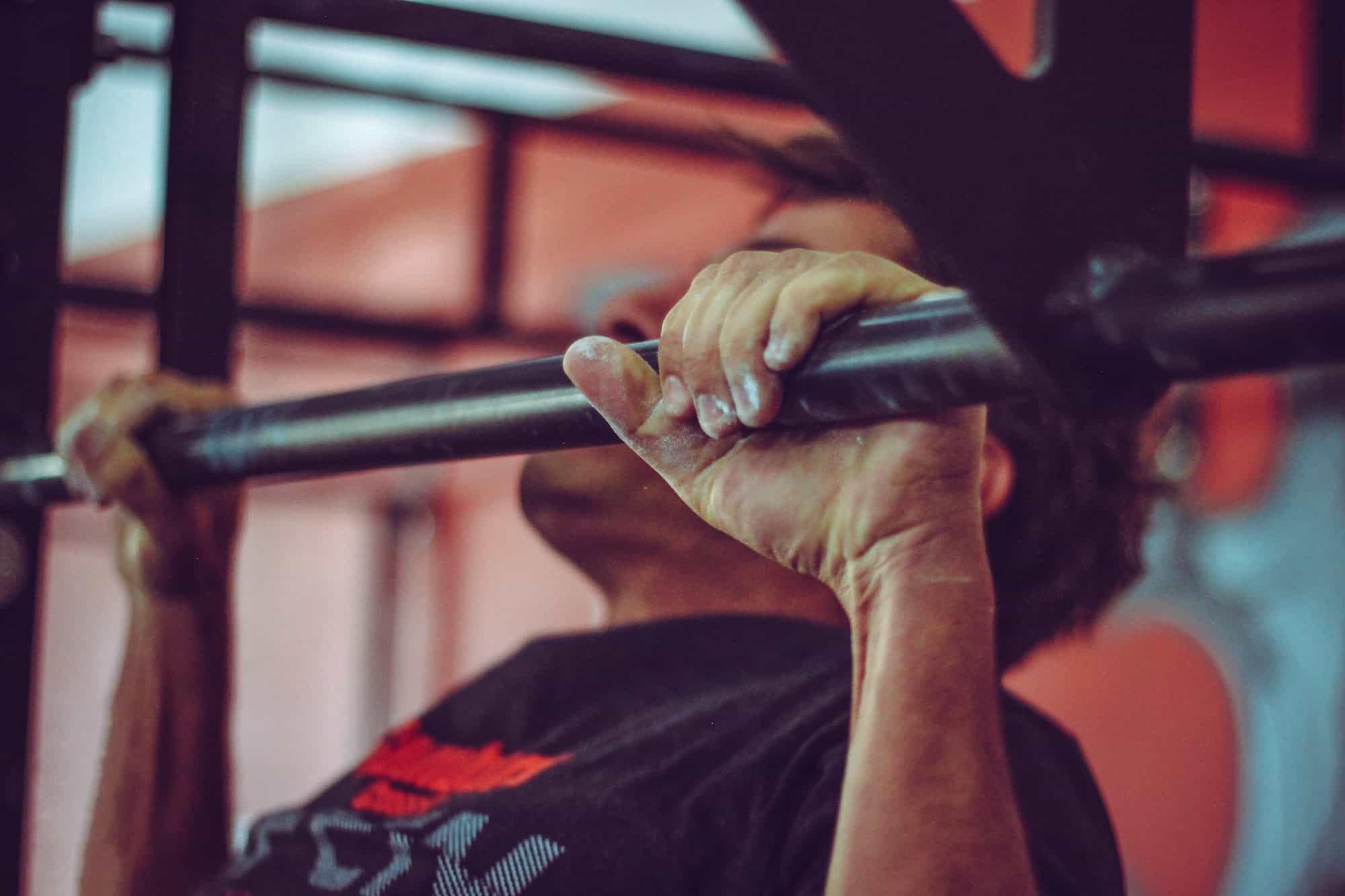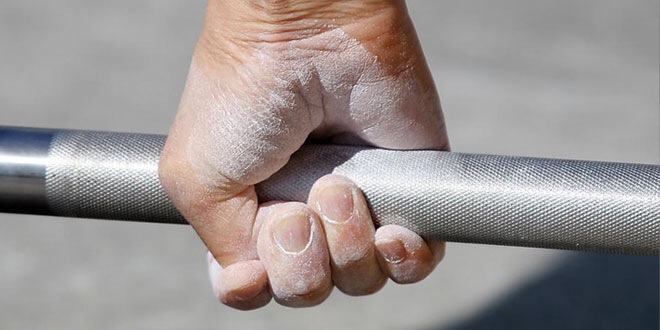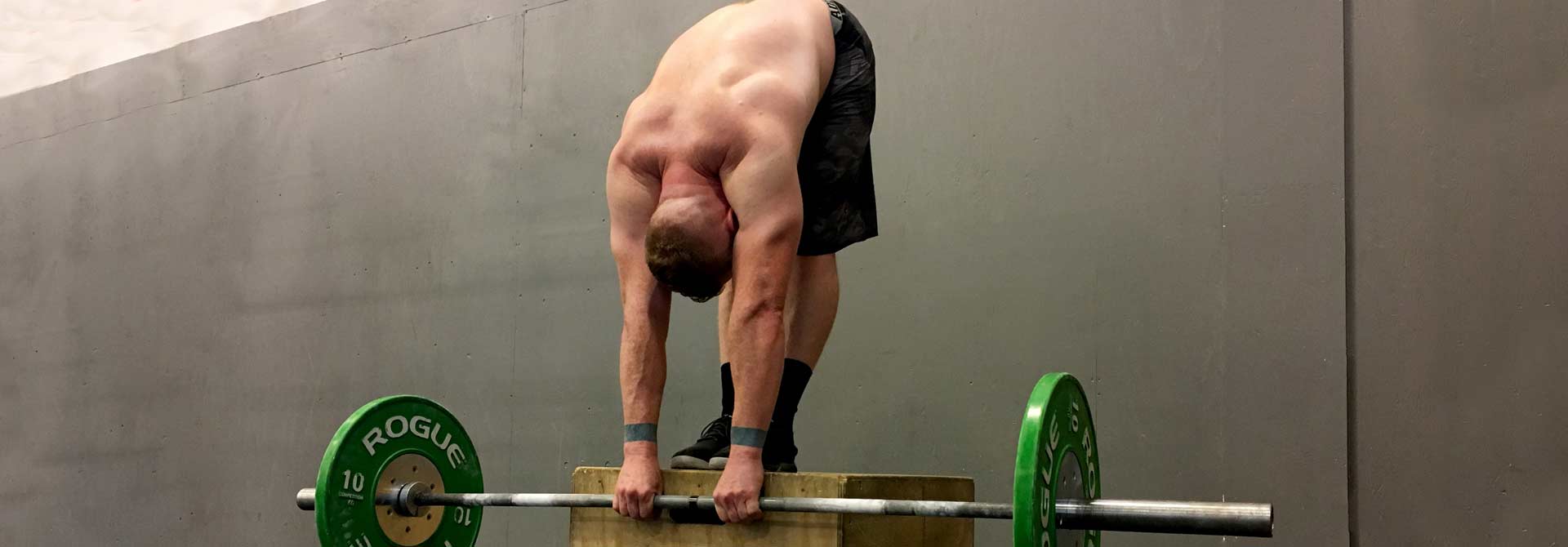Despite the pull-up being far removed from the usual heavyweight iron culture of most powerlifting gyms, it’s a staple in nearly any lifter’s program, much more so than the push-up. Pull-ups continue to be a useful exercise for powerlifters who need a movement for the antagonist muscles in the press and bench press, and they are even more valuable for shoulder stability and scapular mobility than rows, the natural opposite to the bench. But few lifters take their pull-ups past the usual 8-12 rep range, and even fewer make use of pull-up variations for their powerlifting training.
I’m here to argue that the pull-up isn’t just an exercise nearly any beginner, intermediate, or experienced lifter should be incorporating into their training, but it’s a movement that begs for the same kind of progressive overload we apply to our squat, bench, and deadlift. When trained effectively, the pull-up isn’t just a beastly movement, but it’s also got great carry over to your other lifts as you build a stronger and far more reliable back.
Why Your Program Needs Pull-Ups
The main benefit of the pull-up over a row is its effectiveness as a way to teach scapular depression and retraction. A proper pull-up requires you to effectively engage your shoulders and back in such a way that you’re angling your chest upwards, and keeping your lats engaged – meaning, rather than going from a totally relaxed dead hang in every rep, you’re fully extending the elbows but keeping your back tight and stretched.
This position at the bottom, where the scapulae are pulled down and back and the chest is brought up, mimics the position you’ll find yourself in when preparing for a bench press. However, instead of pushing the weight away from you, you’re bringing yourself up towards a bar that’s quite far away. This process of bringing the bar closer to you while keeping your shoulders back and depressed mimics what we want when we’re going through the eccentric portion of the bench press, where you aren’t just bringing the bar down to your body, but you’re bringing your body up towards the bar.
Besides that, the pull-up is also the best bang-for-your-buck vertical pulling exercise in the world, and much like the push-up, it considerably benefits from requiring very little in the way of equipment. If you aren’t lucky enough to have a pull-up bar to use, or are stuck at home, you can always use a doorframe or a strong low-hanging tree branch.
I wouldn’t go so far as to call the pull-up the end-all-be-all of pulling exercises, and I’m a very big fan of the row. However, pull-ups have a far greater range of motion, are extremely versatile, and very cheap to do. If you aren’t already doing pull-ups, or if you aren’t working towards your first pull-up, I’d ask you to reconsider the way you’ve been training and work to incorporate the pull-up at least 2-3 times per week.
Can’t Do a Pull-Up?
Few people can naturally do pull-ups. If you’re short-to-average in height, fairly lean, and relatively athletic, you’ll have an easier time getting your first pull-up than if you were very tall, or overweight. Women have a harder time with pull-ups than men, but there are plenty of women who can do far more pull-ups than I can.
Much like with push-ups, once you manage to get your first proper pull-up, the next few reps will come much more easily.
I’ll start right away by admonishing those who try to teach people to kip their first pull-up. It’s probably no secret that I’m not impressed by CrossFit’s general philosophy, nor am I a fan of what some of the more infamous boxes call “training”, and while I do accept that there are genuinely knowledgeable CrossFit coaches and athletes, one of the exercises that get on my nerves far more than nearly anything else in the fitness industry is the kipping pull-up.
Even if you have the shoulder strength and mobility to do this exercise safely, it is a bastardization of the pull-up that leaves a terrible taste in my mouth. And for beginners, it’s little more than a quick way to strain or sprain any of the several fragile ligaments that surround the shoulder joint.
That being said, a trainee’s first steps towards a first pull-up should be with a partner.
- Start by getting help to pull yourself up into the top position of the pull, with your forehead touching the bar. Then, ask your partner to let go, and lower yourself as slowly as possible. Aim to increase the length of time it takes for you to go from the top position into a dead hang.
- Simultaneously, train to improve your hang. Don’t hang completely limp – retract and squeeze your shoulder blades together while you hang and try to bring your chest up a little bit, as though you were trying to aim your nipples towards the bar. Hold this position for as long as you can.
Through the eccentric (negative) pull-up and the active hang, you will slowly develop the strength needed for a clean pull-up. These beginner pull-up variations are often better alternatives to simply doing a ton of lat pulldowns, which have very little carryover in my experience.
Pull-Ups for Reps or for Strength?
At this point you should be able to do pull-ups from anywhere between 5 to 12 repetitions. So, what now? This is where many lifters plateau. Because the pull-up is ostensibly never more than a simple accessory exercise, it’s never given the same attention as the big three – and rightfully so, I might add. It’s not a lift you score points for in competition, so you shouldn’t treat it the same way. You should, however, take it a little more seriously. Weighted pull-ups build big, strong lats and stable shoulders. The pull-up can be modified to emphasize power and explosiveness, or to build bigger biceps, or improve your forearm supination.
As such, I personally find that there’s little point in managing to do more than 20 pull-ups, and I’d say you should start thinking about weighted pull-ups once you are within the realm of 12-15 clean reps per set. You can still do pull-ups for reps if that’s your primary goal (not everyone reading this has to be a powerlifter), but if it’s the strength benefits you’re after, then treat the pull-up like the push-up or dips, and slap some extra resistance on that bad boy once you’re past a clean dozen.
- Use banded resistance. Attach bands to an incredibly heavy object at the base of the bar and wrap them around your waist or back, depending on the level of resistance you want. Banded resistance is great for speed pulls, as the resistance increases towards the top. That means you’ll want to pull explosively and take advantage of the acceleration to finish the pull.
- Use a dip belt with weights. The prime way to do weighted pull-ups is with a dip belt. Dip belts are sturdy belts with a chain that can be used to attach one or more plates of different weights to be hung at the waist. As the name implies, they’re also great for dips.
- Use a front-mounted backpack. You’ll want a front-mounted one because a backpack worn in the back during pull-ups has awkward weight distribution and can swing, much the same reason why you’ll want to keep the weight on your dip belt attached in front of you.
- Don’t use a dumbbell or kettlebell held between your feet or thighs. This detracts from the pull itself and makes you focus too much on keeping the weight steady. It also won’t let you pack on any serious weight. Seriously, just use a backpack.
Useful Pull-Up Variations
So we’ve covered the basics: the pull-up is great for powerlifters, and you should program it with weights, progressing towards heavy triples and sets of 5-8 with varying weight and aiming for more and more weight on the belt as time goes on. Don’t expect big jumps, and always add weight in increments of 5lbs/2.5kg every month or training cycle.
But what about actual pull-up variations? Is there any use in doing different pull-ups, such as the behind-the-neck pull-up, a one-armed pull-up, or typewriter pull-ups? While I’d argue that the standard pronated pull-up is the best kind of pull-up, there is some use in trying out some pull-up variations for powerlifting.
- Slow pull-ups. Even if you can knock out sets of 10 with what feels like relative ease, it takes considerably more effort to do tempo pull-ups. Control your descent and your ascent and slow down each step of the movement. One of the hardest reps I’ve ever had to complete was the one-minute pull-up: thirty seconds to get your chin over the bar, and thirty seconds to bring yourself back into a dead hang, no second more or less. This is also a great way to clean up poor pull-up form because you can’t cheat. These will tax your shoulders, too.
- Grip variations. You can do pull-ups with a mixed grip, a supinated grip, a close grip, a wide grip, one-armed, one-armed with the supporting arm holding onto your working arm, and so on. More interesting grip variations throw objects into the mix. Old towels and sturdy ropes come to mind, requiring you to really hold on for dear life while pulling. These are decent at building grip strength while you pull, but they’re not as useful as a static hold with heavy weight.
- Scapular pull-ups. If you have trouble getting tight in the shoulders before you bench press, then scapular pull-ups are an ideal warmup. These have you simply pulling your chest closer to the bar without engaging the biceps, keeping your elbows locked out the whole time. What you’re trying to achieve is scapular retraction and protraction as you elevate and lower your chest.
- Sternum pull-ups. The idea here is to go for a normal grip (whatever you’re comfortable with), and as you initiate the pull, aim to tilt your head back as much as possible and pull into your lower chest/upper abdomen. This is basically a pull-up row hybrid. This is different from similar chest-to-bar pull-up variations, which are just about a more explosive pull. The change in angle lets you further target the lats. Don’t hang between reps here, just go for the stretch and repeat the movement – it’s mostly a hypertrophy exercise. Ideal if you don’t have anything to row, but the barbell is still superior.
Again, of all these pull-up variations, the best one is still the original with more weight. Heavy pull-ups are incredibly satisfying and a nice change of pace from chasing after more and more reps, which is arguably a useless pursuit for a powerlifter. That and the back and shoulders built by a two-plate or three-plate pull-up are nothing to sneeze at.





